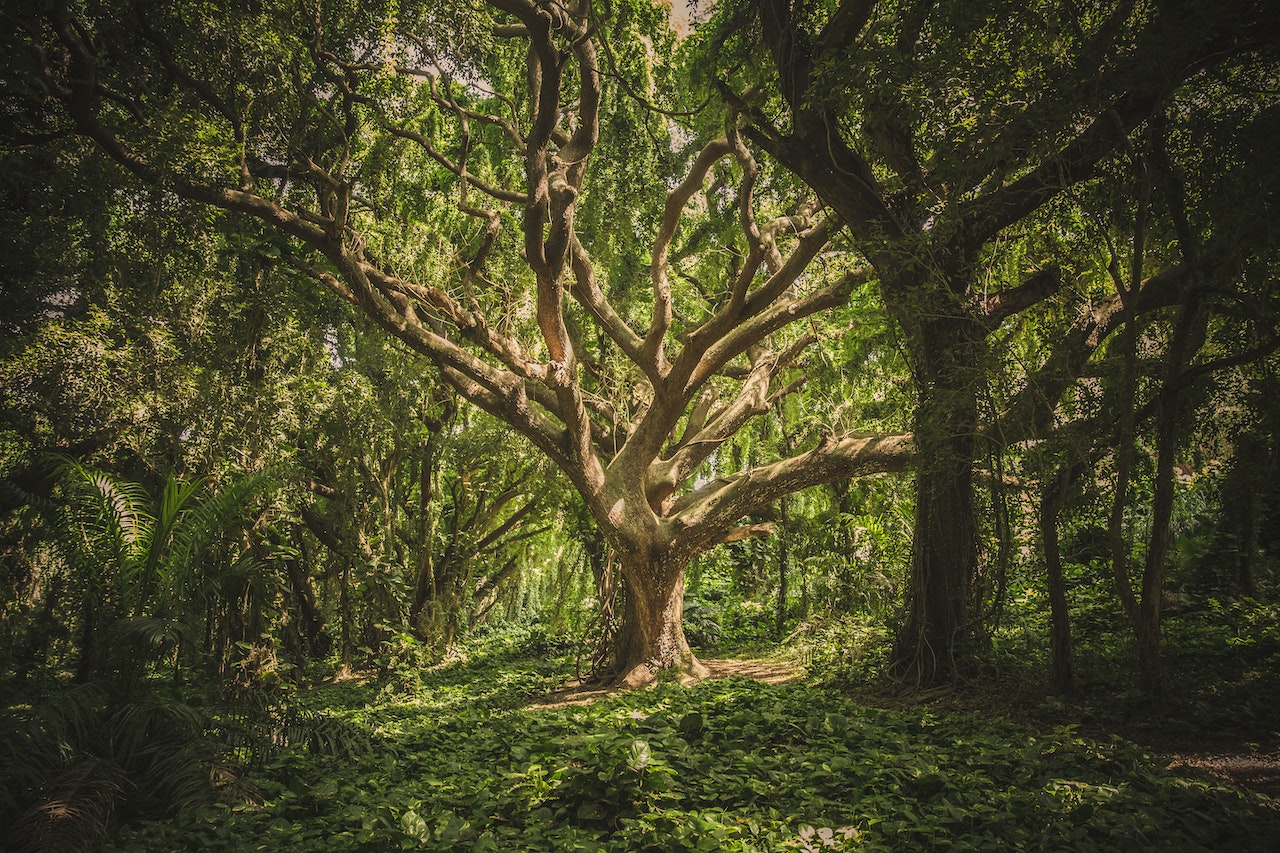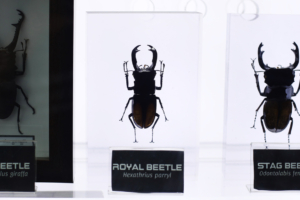Top 25 Interesting Facts About Trees

Trees are an essential part of our environment, providing numerous benefits to humans and wildlife alike. From purifying the air we breathe to supporting wildlife habitats, trees are vital to maintaining the health of our planet. In this article, we will explore 25 fun facts about trees, including their physical characteristics, cultural significance, and environmental importance.
Trees as the Lungs of the Earth
Trees are often referred to as the lungs of the Earth because they play a vital role in producing the oxygen that humans and other animals breathe. They also absorb carbon dioxide, a greenhouse gas that contributes to global warming, through a process called photosynthesis. Trees have been an important part of human civilization throughout history, and they continue to play a critical role in sustaining life on our planet.
The Diversity of Trees in the World
Trees are found all over the world, from the Arctic Circle to the equator, and from deserts to rainforests. They come in many different shapes, sizes, and varieties, with over 60,000 species of trees identified to date.
The Importance of Trees in the Environment
The Role of Trees in Carbon Sequestration
Trees play a critical role in carbon sequestration, the process by which carbon dioxide is removed from the atmosphere and stored in the ground, trees, and other plants. Trees absorb carbon dioxide during photosynthesis and store it as carbon in their leaves, branches, and trunks. This helps to reduce the concentration of greenhouse gases in the atmosphere and mitigate the effects of climate change.
The Relationship Between Trees and Climate
Trees help to regulate the climate by absorbing carbon dioxide and releasing oxygen, which helps to cool the planet. They also release moisture into the atmosphere through a process called transpiration, which helps to create clouds and regulate rainfall patterns.
The Impact of Deforestation on the Environment
Deforestation is the process of clearing forests for agricultural or industrial purposes. This has a devastating impact on the environment, as it leads to the loss of biodiversity, soil erosion, and increased carbon emissions. Deforestation is responsible for around 10% of global greenhouse gas emissions.
The Physical Characteristics of Trees
The Structure of Trees
Trees are composed of several parts, including the roots, trunk, branches, and leaves. The roots anchor the tree in the ground and absorb nutrients and water from the soil. The trunk supports the weight of the tree and transports water and nutrients from the roots to the branches and leaves. The branches and leaves are responsible for photosynthesis, the process by which trees convert sunlight into energy.
The Growth Patterns of Trees
Trees grow in a variety of patterns, including single-stem, multiple-stem, shrub-like, and vine-like. The growth pattern of a tree depends on its species, as well as environmental factors such as light, water, and temperature.
The Bark of Trees
The bark of a tree is the outermost layer of its trunk and branches. It protects the tree from environmental stresses such as drought, extreme temperatures, and physical damage. The bark also contains living tissues that transport water and nutrients throughout the tree.
The Different Types of Trees
Coniferous Trees
Coniferous trees, also known as evergreens, are characterized by their needle-like or scale-like leaves and cones. They are found in cold and temperate regions and include species such as pine, spruce, and fir.
Deciduous Trees
Deciduous trees are characterized by their broad, flat leaves that change color and fall off in the autumn. They are found in temperate regions and include species such as oak, maple, and birch.
Tropical Trees
Tropical trees are found in the warm, humid regions near the equator. They are characterized by their large, broad leaves and include species such as palm trees, rubber trees, and banyans.
The Oldest Trees in the World
Methuselah, the Oldest Tree in the World
Methuselah is a bristlecone pine tree located in California’s White Mountains and is believed to be over 4,800 years old, making it the oldest known non-clonal tree in the world.
The Ancient Bristlecone Pines of California
The ancient bristlecone pines are a group of trees in the western United States that have been alive for over 4,000 years. These trees have adapted to harsh environments and have remarkable resistance to disease and drought.
The Old Tjikko, the Oldest Clonal Tree in the World
The Old Tjikko is a clonal Norway spruce tree located in Sweden and is estimated to be over 9,550 years old, making it the oldest known living tree in the world.
The Tallest Trees in the World
The Hyperion, the Tallest Tree in the World
The Hyperion is a coast redwood tree located in California and stands at 379.7 feet (115.7 meters), making it the tallest known tree in the world.
The Coast Redwood Trees of California
The coast redwood trees are a group of trees that are among the tallest trees in the world, and are known for their impressive height and longevity. They are native to the Pacific coast of North America.
The Mountain Ash Trees of Australia
The mountain ash trees are a group of eucalyptus trees that are the tallest flowering plants in the world, and can reach heights of up to 330 feet (100 meters). They are native to southeastern Australia.
The Fastest-Growing Trees in the World
The Eucalyptus Trees of Australia
Eucalyptus trees are known for their rapid growth, and some species can grow up to 10 feet (3 meters) per year. They are native to Australia and have been introduced to other parts of the world.
The Paulownia Trees of Asia
The paulownia trees are known for their fast growth and can reach maturity in just a few years. They are commonly grown for their timber and are native to China and other parts of Asia.
The Bamboo Trees of China
Bamboo is a fast-growing grass that can reach maturity in just a few years. It is used for a variety of purposes, including construction, furniture, and paper production.
The Role of Trees in Climate Change
Trees as Natural Carbon Dioxide Absorbers
Trees absorb carbon dioxide through photosynthesis, making them an important tool in reducing the amount of carbon dioxide in the atmosphere.
The Importance of Reforestation in Mitigating Climate Change
Reforestation is the process of planting trees in areas where forests have been destroyed, and is an important tool in mitigating the effects of climate change.
The Impact of Climate Change on Tree Growth and Health
Climate change can have a significant impact on the growth and health of trees, including increased susceptibility to disease and pests, and changes in the timing of growth and reproduction.
The Economic Importance of Trees
The Role of Trees in the Timber Industry
Trees are an important source of timber, and the timber industry is a significant contributor to many economies around the world.
The Value of Non-Timber Forest Products
In addition to timber, trees provide a range of non-timber forest products such as fruits, nuts, and medicinal plants, which can have economic value.
The Impact of Trees on Local Economies
Trees can have a significant impact on local economies, including tourism, recreation, and other ecosystem services.
The Medicinal Properties of Trees
The Healing Power of Trees in Traditional Medicine
Various cultures have been using different parts of trees for medicinal purposes for centuries. Trees such as willow, birch, and pine have been used to treat pain and inflammation.
The Use of Tree Extracts in Modern Medicine
Many modern medicines are derived from compounds found in trees, such as the cancer drug Taxol, which is derived from the Pacific yew tree.
The Importance of Forest Bathing for Health and Wellness
The practice of spending time in forests, known as forest bathing, has been shown to have positive effects on human health, including reducing stress and boosting the immune system.
The Cultural Significance of Trees
The Symbolism of Trees in Different Cultures
Trees hold a special symbolic meaning in many cultures. For example, the bodhi tree is a symbol of enlightenment in Buddhism.
The Role of Trees in Festivals and Celebrations
Trees play a central role in many cultural festivals and celebrations, such as the Christmas tree in Christian traditions and the hanami festival in Japan.
The Connection Between Trees and Human Spirituality
Trees are often seen as spiritual or sacred entities in many cultures, such as the Tree of Life in Norse mythology.
The Role of Trees in Religion
The Sacred Trees of Different Religions
Trees are considered sacred in many religions, such as the Oak tree in Druidry and the Bodhi tree in Buddhism.
The Importance of Trees in Mythology and Folklore
Trees feature prominently in many myths and folktales, such as Yggdrasil in Norse mythology and the Tree of Knowledge in Judeo-Christian tradition.
The Spiritual Significance of Trees in Different Cultures
Trees are often seen as a bridge between the physical and spiritual worlds in many cultures, and are used for spiritual practices such as meditation and prayer.
The Use of Trees in Construction
The Use of Wood in Building and Architecture
Trees have been used as a building material for thousands of years, and modern technologies have made it possible to create highly sustainable wooden structures.
The Role of Trees in Providing Shade and Shelter
Trees are often used for providing shade and shelter, both in natural and built environments.
Sustainable Construction Practices using Wood
The use of sustainably harvested wood in construction has become an important aspect of green building practices, as it reduces carbon emissions and supports forest conservation.
The Importance of Forests for Wildlife
The Habitat Value of Trees for Wildlife
Trees provide vital habitat for many species of animals, including birds, mammals, and insects.
The Role of Trees in Supporting Biodiversity
Trees are essential for maintaining biodiversity and ecosystem health, as they support a wide range of plants and animals.
The Threats to Wildlife from Deforestation
Deforestation poses a significant threat to wildlife, as it destroys their habitat and reduces the availability of resources they need to survive.
The History of Arboriculture
The Evolution of Arboriculture as a Science
Arboriculture, the study of trees and their care, has a long and rich history, dating back to ancient civilizations such as the Egyptians and Greeks.
The Role of Trees in Landscaping and Urban Planning
Trees have played a significant role in landscaping and urban planning, as they provide aesthetic and environmental benefits in urban areas.
The Use of Trees in Agriculture and Horticulture
Trees are used in agriculture and horticulture for a variety of purposes, such as fruit production, erosion control, and windbreaks.
The Art of Tree Shaping
The History of Tree Shaping
Tree shaping, also known as arbor sculpture or tree training, has a rich history dating back to ancient civilizations.
The Different Tree Shaping Techniques
There are many different techniques for shaping trees, including pruning, grafting, and bending. Some artists even use elaborate wireframes to guide the tree’s growth.
The Role of Tree Shaping in Landscape Design
Tree shaping is a popular technique for creating unique and eye-catching landscapes. It can be used to create living sculptures, archways, and even entire structures.
The Unique Adaptations of Trees
Trees have evolved many unique adaptations to survive and thrive in different environments. These include root systems that can reach deep into the ground for water, leaves that can trap and absorb moisture, and bark that can protect against pests and diseases.
The Effect of Trees on Human Health
Trees have been shown to have a positive effect on human health, both physical and mental. They help purify the air, reduce noise pollution, and provide shade and cooling during hot weather. They have also been shown to reduce stress and improve overall well-being.
The Benefits of Urban Trees
Urban trees provide many benefits, including improving air and water quality, reducing heat island effects, and providing shade and beauty to city streets. They also provide habitat for wildlife and contribute to the overall health and well-being of urban residents.
The Threats to Trees and Forests
Forests and trees around the world face many threats, including deforestation, habitat destruction, invasive species, and climate change. These threats have serious consequences for wildlife, local communities, and the global environment.
The Efforts to Conserve Trees and Forests
Efforts to conserve trees and forests are underway around the world, including reforestation projects, sustainable forest management, and campaigns to reduce deforestation. These efforts are crucial for preserving biodiversity and mitigating the effects of climate change.
The Future of Trees in the Changing Climate
As the world’s climate continues to change, trees and forests will face many challenges. It will be important to develop strategies for adapting to these changes and protecting vulnerable species and ecosystems.
The Role of Trees in Sustainable Development
Trees play a crucial role in sustainable development, providing essential ecosystem services such as carbon sequestration, soil conservation, and water filtration. They are also important for supporting local communities and economies, providing timber, non-timber forest products, and ecotourism opportunities.
The Use of Trees in Energy Production
Trees and other woody biomass can be used to produce renewable energy, including biofuels and wood pellets. While this can be a sustainable alternative to fossil fuels, it is important to ensure that the production of bioenergy does not have negative impacts on forests or food security.
Conclusion
Trees are an essential component of our planet’s ecosystems, providing numerous benefits to humans and wildlife alike. Protecting and preserving trees and forests is crucial for ensuring a sustainable future for our planet.





